Dealing with the Dempster
The first time we heard about the Dempster Highway was at a tiny booth at an RV trade show. We were assured it was easily driven by RV and well worth the time to do so. It runs north from just east of Dawson City in Yukon Territory, past the Arctic Circle, and travels 457 miles to the McKenzie River delta at Inuvik. And not one inch of it is paved — it is 100% gravel and dirt.
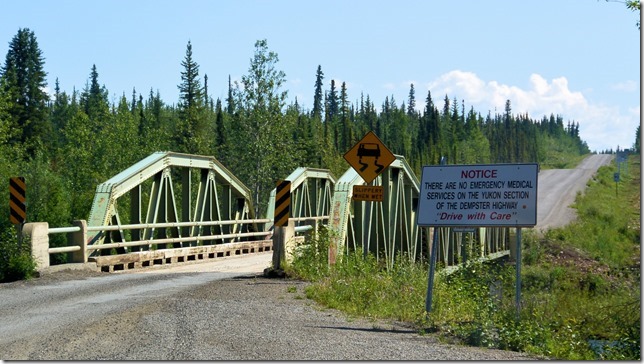
As we did our research, other “features” of the Dempster came to light. Long stretches of chip rock shale, described as a road “made out of Indian arrow-heads”. Multiple precautions from many sources to carry extra gas and even extra spare tires, and plan to have your windshield replaced (maybe twice). One clearly identified stretch of road with 229 miles between fuel stops. Warnings about “bone rattling” washboard.
It began to sound like an RV-eating road, and we were concerned and suspicious. We resolved to make the go-nogo decision only after talking to real people who had been there.
Long story short: we decided to go, and we’re at mile 45 as I write this. Nobody we talked to, who had made the journey, had anything really horrible to say. Yes, we might get a flat from the razor-sharp chip shale. But the highway maintenance has steadily been reducing these areas. Yes, we might get a windshield prang from a passing truck. But we already got a huge prang on a paved road, so go figure.
The reward for our decision to go has been a truly great gravel road, with truly fantastic, sweeping views of a wild Arctic land. Yeah, we found some potholes and some washboard, so it took more attention than usual to the road conditions – but what we got to see was more than worth it. At 10% of the trip (one-way) under our belts, we are excited, to say the least.
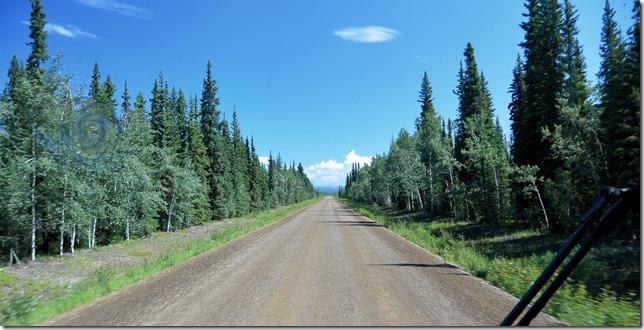
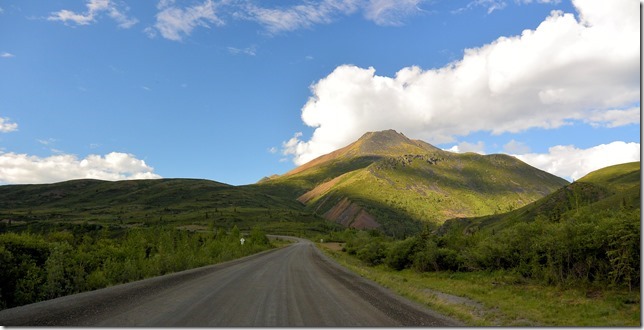
Our first Dempster camp was at the Tombstone Mountain campground. Surprisingly, this camp was full at 2PM, very unusual. We managed to find a space, and never figured out why there were so many campers there. The next day, there were several empty sites even at 8PM. The only thing we could think of was that maybe a large bunch of people left Dawson right after the summer solstice celebration last Sunday, and filled the place up on Monday.
With no other place to stop/stay for another 80 miles, we wondered out loud at the visitor center what hapless fate might befall the late-coming visitor, when all spaces were full. The staff assured us that there were multiple over-flow opportunities to accommodate all callers – which gave us some comfort as we travel into the unknown North up the road.
We took a strenuous (for us) guided hike up Goldensides Mountain on our first night from 7PM-10PM. (Obviously, getting dark is not a problem here in June.) The hike worked uphill from a microwave tower, climbing about 700 feet in a mile or so (15% grade). Really nice views of the surrounds, and some interesting info from the guide on Arctic flora. Here’s a lichen that grows just as you see it, but looks like a dried-up leaf.
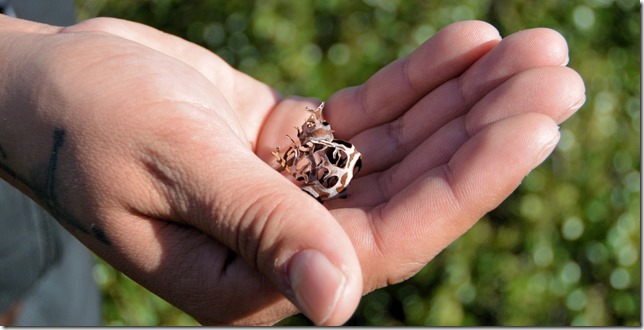
Superb view from the Goldensides trail, of the distant highway and our campground area.
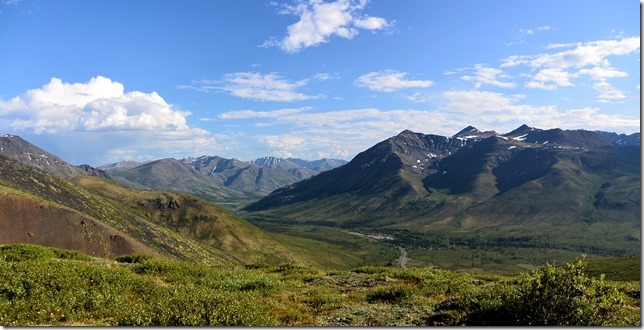
And another view, more to the north, showing the last of the ice melting away from the North Klondike River. The sense of space and wildness soaked into us, making us ever more happier about deciding to make this journey.
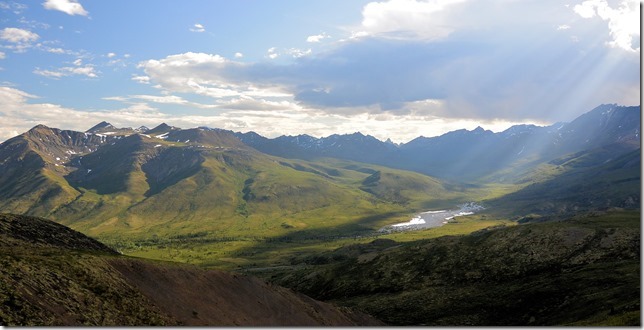
A friendly, but aloof, hoary marmot greeted us at the top of the trail.
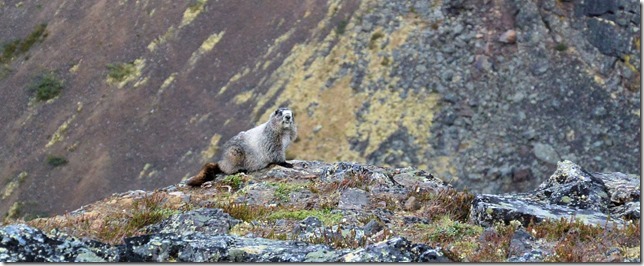
The (usual?) evening thunderstorms had just started their spattering as we got back to the trailhead. Sure was a lot easier going down…
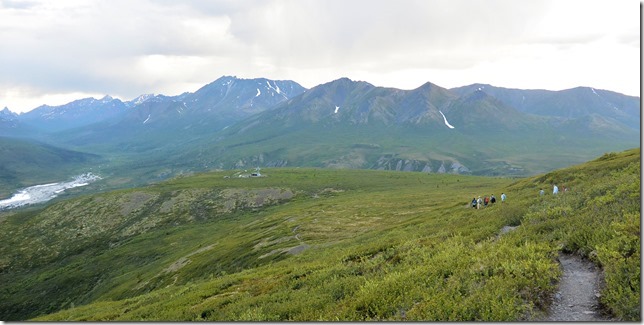
The next day, we were raring to go on our own hike, so we checked in for current info at the visitor center. Found this notice on the whiteboard. So there really are grizzlies in the area, and whoopee, they like to play!
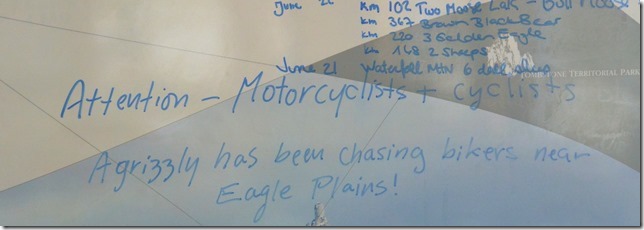
With Eagle Plains 180 miles north, we were hardly concerned – besides, we were going hiking, not riding, along the Klondike River trail. All that said – we took the bear spray along. In this country, one is never in doubt that bears are to be found. Every kiosk has a “Bear Safe” poster, every rack of literature has several “Be Safe” brochures, and every camp is amply equipped with bear-proof trash bins. This camp also had food-cache racks so tenters could haul their food up twelve feet in the air.
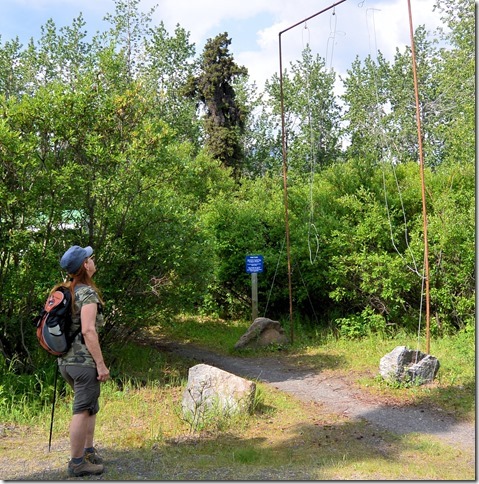
The Klondike River trail was a delight, closely following the river (although through heavy brush at times) and opening up for some great views of this wandering river. Sad to say, the clouds came in (again) to spoil the photography.
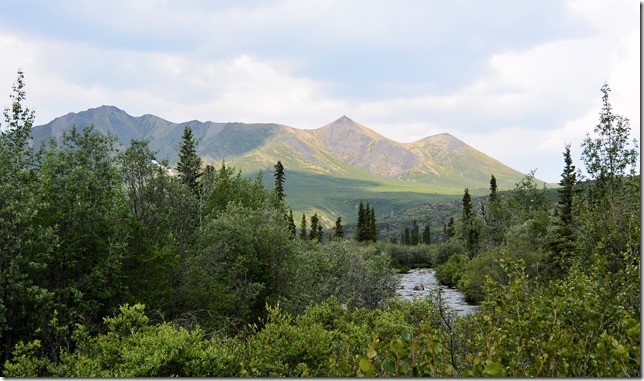
Fortunately, the weather didn’t dampen the spirits of some ptarmigan, who posed for us along one of the boardwalk stretches of trail.
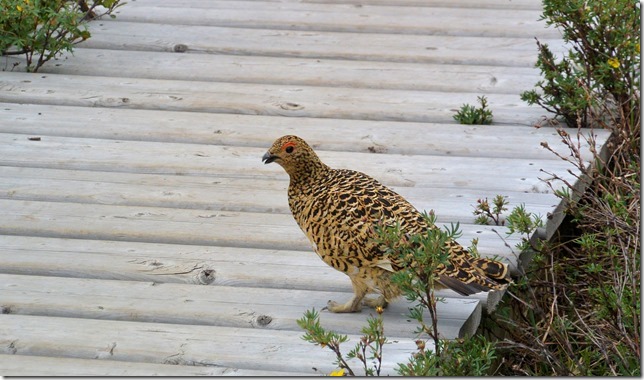
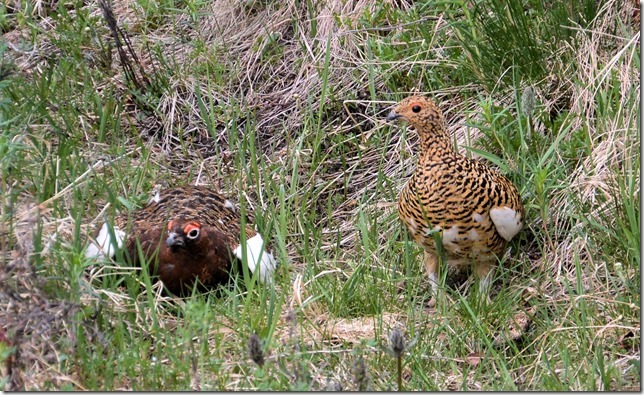
See the bare twigs on this willow branch (center)? That’s where the moose nibbled off the new leaves. There’s also a broken branch (lower left). Tracks, scat, and browse sign were everywhere along the trail, but we didn’t get to see any moose. The tracks indicated a cow and one or two calves – so maybe it was good we didn’t run into them. Mama mooses (meese?) are extremely protective.
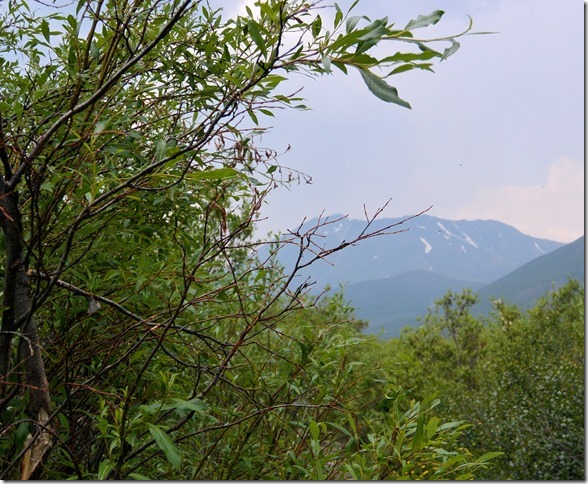
This snow-looking stuff is called Reindeer Lichen; the reindeer/caribou like it a lot. [Same animal: ‘reindeer’ is predominantly used in Europe, and ‘caribou’ in North America. The terms are interchangeable. Now who’s going to tell Rudolph?]
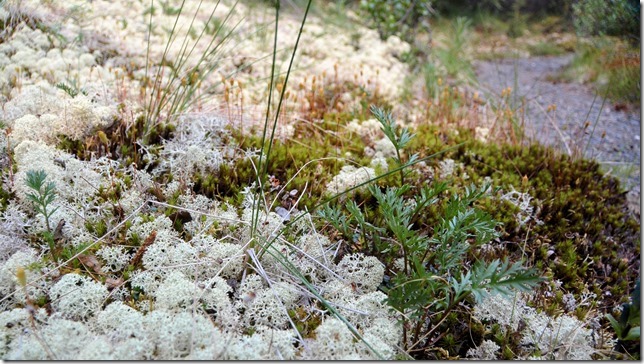
Despite a rainy evening, we went down the road to check out a large beaver pond. The rain-specked water will explain why the light is so flat. The dam forming the pond was at least six feet high, and perhaps 300-400 feet long. Quite an undertaking for a 30-pound rodent.
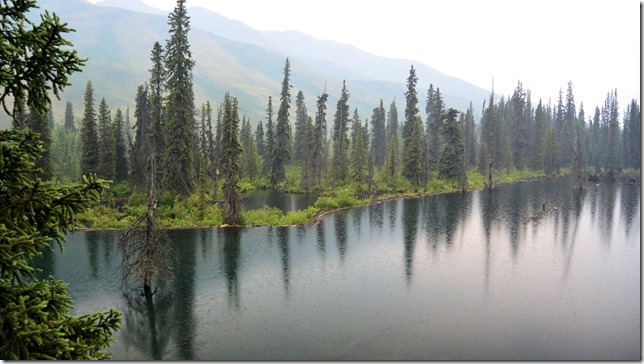
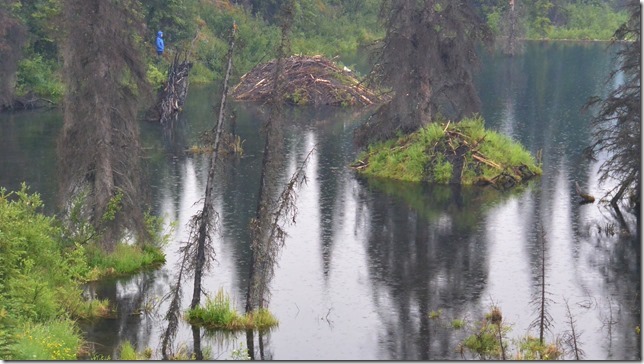
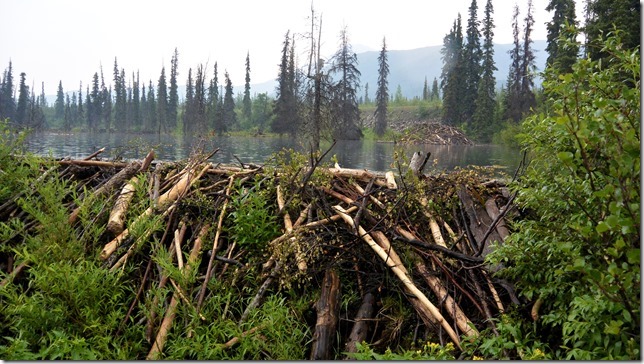
Tomorrow is 183 miles up to Eagle Plains. Not a long drive normally, but “normal” drives don’t go for hundreds of miles on gravel roads, even good ones like the Dempster has been (so far). We’ll see how it goes.

Hey Guys,great pics and stories..wish I would have come along..
getting closer to caribou country..hope we’ll see some pics from you..
tony and marlene
Ah yes, we are right in the middle of caribou country – – but unfortunately, the migration is not until September. We’re unlikely to see any of them this early.
Great pics and great writing! Stay safe and happy trails.—John L.
Hi both of you – As always, it’s great to share your beautiful adventures and photos. Keep ’em coming. Love you, Mom
Beautiful pictures Greg! I hope I can convince Maria to try an adventure like that some day. Karin could help me convince her.
How does a 30 pound rodent move that much material?
Beautiful wild country. It looks like a place we would love to be traveling through. That beaver dam is amazing! Thanks for the valuable info also. Looking forward to future posts.
Vista and wildlife photos keep getting better and better. Glad you are venturing the trek. But between shale, grizzlies, and even vicious marmots, keep safe!